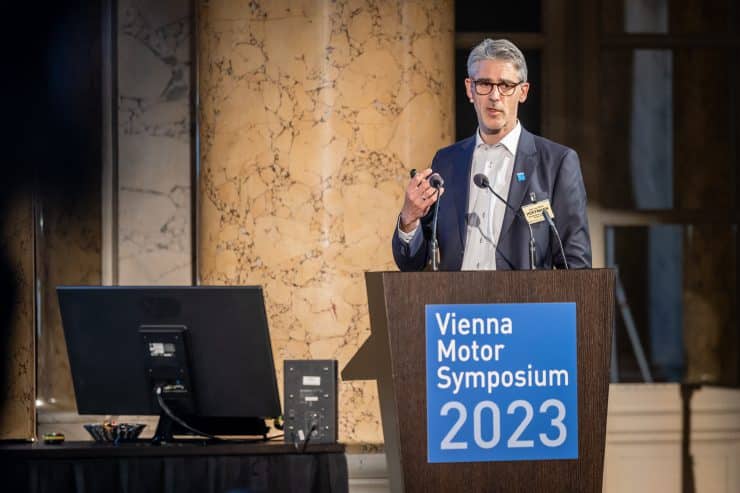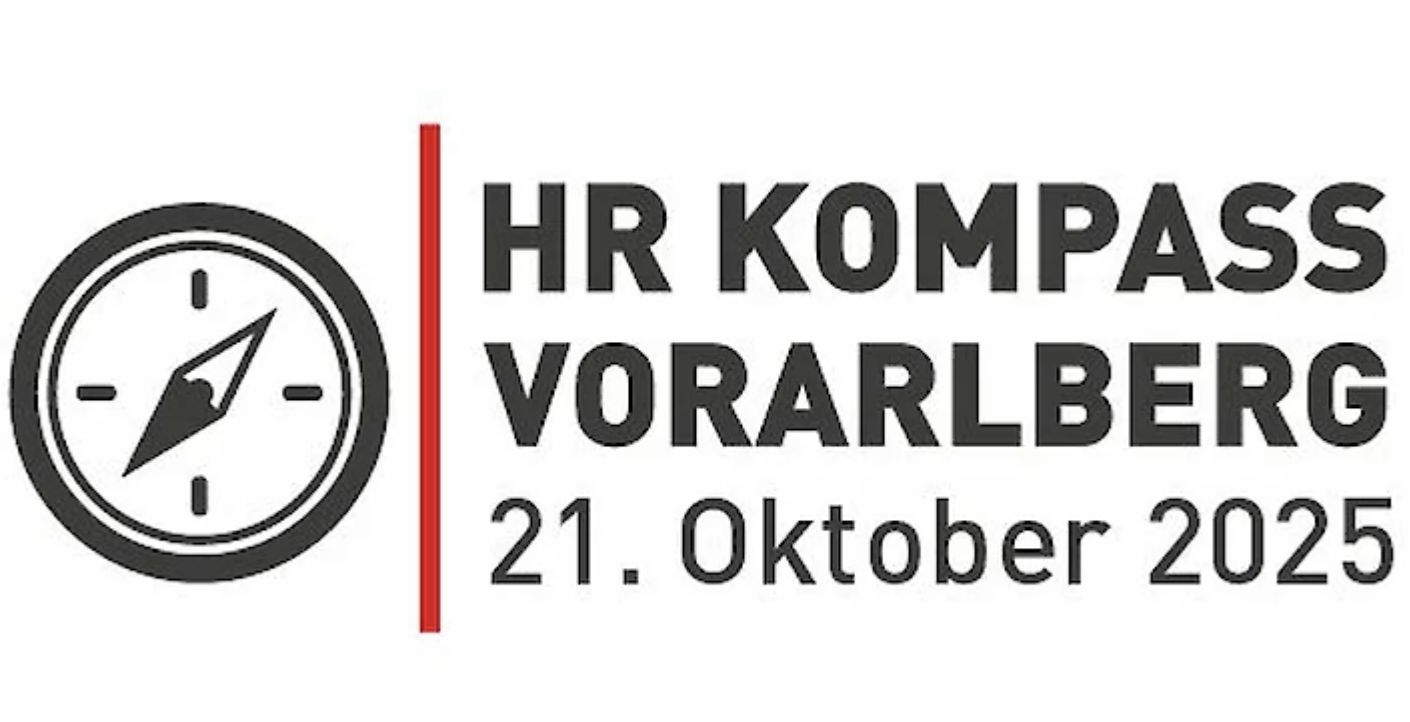There is currently a renewed focus on hydrogen when it comes to powering internal combustion engines: it is now being viewed as a credible sustainable solution not just for generators and heavy agricultural but also construction, and mining vehicles. At the 44th International Motor Symposium in Vienna, renowned industry players like Daimler Truck, Cummins, Bosch, Magna, Hyundai, Toyota, AVL, JCB, BorgWarner or Punch Hydrocells joined with scientists to discuss the latest findings.
Hydrogen internal combustion engines are relatively simple to design, robust, comparably inexpensive, and need significantly smaller cooler surfaces than fuel cells. The EU even classifies hydrogen-powered heavy utility vehicles as emission-free, provided they burn green hydrogen.
“Hydrogen is becoming a significant energy source for the future”, commented Stefan Hoffmann from the Hyundai Motor Europe Technical Center, on occasion of the Vienna Motor Symposium. He was referring to green, carbon-neutral hydrogen. The latter can be produced using renewable electricity and can be stored and transported either as a gas or as a liquid in hydrogen derivatives such as synthetic fuels (e-fuels). According to Chi, by late 2021 there were 228 hydrogen filling stations in Europe, 363 in Asia – of which 161 in Japan and 95 in South Korea -, and 82 in the United States. In Austria, currently five public service stations offer the option for hydrogen refuelling and it is hoped that this number will grow.
Looking at the entire lifecycle
Chi argues that green hydrogen allows for carbon-neutral mobility solutions if one considers the entire energy lifecycle from the provision of power and materials to production and recycling, or at least energy production (well-to-wheel). So far, EU emission legislation has only focused on emissions emitted via exhaust pipes. A kilogram of gaseous hydrogen at a pressure of 700 bar is enough to power a fuel-cell car for 100 kilometres, whereas a 40-ton truck with fuel cells will need an average 9 kilograms of hydrogen to cover the same distance. As a rule, trucks store hydrogen at 350 bar, since they have more space for tanks than passenger cars. In addition, hydrogen has lower operating costs.
In contrast to quick-charging stations, hydrogen filling stations do not require new transformer stations or power lines, but can use and adapt the existing refuelling infrastructure, thus saving time and money. “Hydrogen and fuel-cell technology widen the choice of electric powertrains”, said Ewald Wahlmüller, Manager at Plastic Omnium New Energies Wels GmbH. Wahlmüller presented a conversion kit for 4.6-ton trucks for a hybrid powertrain with batteries and fuel cells. Just like their battery electric counterparts, these vehicles will be propelled by an electric motor, though the electricity will not be coming from the battery but from a fuel cell. It will be generated there with hydrogen, using a chemical reaction. According to Wahlmüller, the advantages of the fuel-cell hybrid light truck over battery electric versions lie in its higher load capacity, a range of 500 instead of 200 kilometres, and a refuelling time of less than five minutes for 8.6 kilograms of hydrogen.
33 percent fuel-cell trucks in the EU by 2040
According to Marius Walters, Department Manager Fuel Cell at FEV Aachen, it is “expected that fuel-cell trucks will be used on a large scale as of 2025”. The share of fuel cells in the heavy-load sector could reach 33 percent in the EU, 18 percent in the USA, and nine percent in China by 2040. This would amount to around 220,000 heavy duty trucks with a fuel cell engine worldwide. According to an ICCT study, trucks currently account for around 22 percent of the EU’s CO2 emissions in road transport. By 2030, these emissions need to go down by 30 percent compared to 2019/2020. Until 2040, all major truck manufacturers plan to offer only carbon-free powertrains.
In order to present fuel-cell powertrains as affordable as possible, manufacturers are currently focusing on a modular architecture. Nathan Joos of Cummins Inc. presented highly integrated modules that can be easily fitted into vehicles and manufactured in large numbers.
One way of making fuel cells less expensive is to reduce the amount of precious metals necessary for the chemical reaction in the cell, which also determine the cell’s efficiency. The precious metals required roughly correspond to the amount required for emission control systems in diesel engines. In addition, the performance of the fuel cell heavily depends on the heat management system, explained Christian Mohrdieck of CellCentric GmbH & Co. KG at the symposium. Current fuel cells need much larger cooling systems than internal combustion engines. According to Rolf Döbereiner of AVL List GmbH, their tests showed that the already significant cooling requirements increase considerably throughout the fuel cell’s lifecycle as a result of ageing.
Hydrogen in internal combustion engines: There’s life in the old dog yet
Having been written off in the past, hydrogen is currently seeing a renaissance in internal combustion engines worldwide. Meanwhile, this type of powertrain is widely considered as the most attractive solution for the transition from diesel to a non-fossil source, especially for heavy agricultural, construction, and mining machinery, but also for stationary applications such as generators.
Internal combustion engines using hydrogen only have a lower efficiency than fuel-cell or battery electric powertrains in the lower load range; under high load, they are even better than fuel cells. However, they present significant advantages: They are relatively simple to design, robust, comparably inexpensive, offer the usual range and short refuelling times, and need much smaller cooler surfaces than fuel cells. Only around 20 percent of the existing engine components need to be adjusted or redeveloped for a conversion to hydrogen combustion, said Francesco C. Pesce of Turin-based Punch. Contrary to the fuel cell, a combustion engine will also work with hydrogen that does not have a purity of 99.999 percent, and it does not require a complex cooling system. In autumn 2022, PUNCH presented a first commercial application for this technology, a V8 hydrogen motor for a generator. In 2023, JCB will launch a hydrogen internal combustion engine for agricultural and construction machinery jointly developed with the German FEV Group.
The challenges of optimising hydrogen combustion
Contrary to passenger cars, EU legislators classify heavy utility vehicles with hydrogen internal combustion engines as zero-emission vehicles, provided they burn green hydrogen. The only noteworthy pollutant emitted in this case are nitrogen oxides. As shown by Peter Grabner of the Institute of Thermodynamics and Sustainable Propulsion Systems at the Graz University of Technology, these can be eliminated using proven emission reduction measures and intelligent boosting systems (e-chargers).
The challenge lies in the optimization of hydrogen combustion. For instance, the hydrogen injector requires a great amount of development, as explained at the symposium by Jean Luc Beduneau, development manager at BorgWarner. This is where Westport Fuel Systems Canada Inc. can reap the benefits of its long experience with gas engines. Hyundai is working together with Bosch in this area.
Hyundai and Toyota stirred up a great deal of interest at the symposium with the idea of using hydrogen internal combustion engines for passenger cars. Though both groups are currently global leaders in fuel-cell cars, they plan to widen the choice of powertrains for their customers. Whether internal combustion engine or fuel cell, what all hydrogen powertrains have in common is the elaborate tank. Among those currently working on less expensive solutions are automobile manufactures like Hyundai, but also major fuel tank producers like the Salzburger Aluminium Gruppe (SAG) or Forvia Faurecia. A particularly challenging problem is the density of the materials and the complex temperature management required to store as much hydrogen in a tank as possible.
The state of the tanked hydrogen – gaseous, liquid, cooled, or in a mixed form – will determine not only the costs or the energy content, but also the respective amount of energy required in each case. According to Thomas Stepan from SAG, the latter can make up to 30 percent of the energy contained in the hydrogen. Most vehicle manufacturers are now focusing on gaseous hydrogen, though Daimler Truck is also testing liquid hydrogen for trucks. To remain competitive, vehicle manufactures believe prices at the fuel pump should not exceed five to six euros per kilogram for green hydrogen (700 bar).
All in all, it is evident that hydrogen is only at the beginning of a success story for mobility – one that has long been heralded but is now about to become a reality.
For further information, visit https://wiener-motorensymposium.at/ and https://oevk.at/
(pi)









